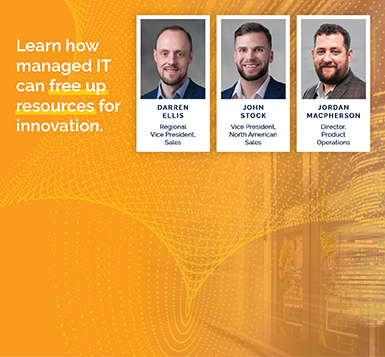What Does EOSL Mean for NetApp Equipment?
Park Place Hardware Maintenance
Park Place Technologies recently posted information regarding forthcoming EOSL dates for some popular NetApp FAS storage systems. The varied terminology applied by different OEMs to different end of life states can be confusing and leave IT pros wondering about the implications for their operations.
End of Life Milestones Explained
To get to the bottom of these issues, following is a brief primer on NetApp end of life and the decision gates an IT organization faces at each stage.
1. End of Warranty
The first line in the sand comes with the end of the initial warranty, which usually happens six months to three years after the hardware purchase. The timing depends on the support contract purchased alongside the equipment.
At this point, customers have two choices. The first, renewing the OEM contract, is a frictionless process, by NetApp’s design. The second, moving to an alternative NetApp support provider, requires intervention but can be very easy as well.
Customers leaning toward a simple renewal should be aware that NetApp’s service costs may be inflated, making it progressively more expensive to support older equipment. This is a strategic choice by NetApp, which serves to make upgrades and upsells appear more financially attractive.
On the other hand, third party maintenance providers can take on all of the maintenance and support tasks NetApp once performed, including systems monitoring and on-site service. Plus, they offer average savings of 60% off NetApp’s contract costs.
Warranty expiration is a good time to take advantage of the higher quality service offered by a company like Park Place and see benefits in the operating expenditure budget at the same time.
2. End of Life
“End of life” is most frequently confused with “end of support life,” but the two could not be more different. End of life is primarily a marketing and production term, and there are limited implications for customers.
When systems become end of life, NetApp discontinues manufacturing of a given filer and will sell off remaining stock. It’s the classic “going out of business” pitch—when they’re gone, they’re gone! No wonder some customers will look at end-of-life equipment for potential deals.
There is no immediate issue to worry about with support availability, however. NetApp continues to offer contracts. The main questions about support at this time center on support value. When NetApp’s engineers have moved on by at least one—and maybe several—technology generations, the likelihood of patches is very low. Customers still paying extra to NetApp just for software updates no longer need to feel tied to the OEM.
Given that NetApp will be going into “sales mode” with customers who still employ end-of-life filers—making some service calls one-half support and one-half marketing—customers may be more comfortable with a non-OEM support solution at this point.
3. End of Support Life
EOSL really is the end of the road for NetApp service for a given piece of equipment. The company will no longer offer support contacts or take service calls. Although this milestone is intended to scream “obsolescence,” it needn’t compel customers to upgrade.
Decisions regarding a storage system’s remaining value to the enterprise and usefulness in the environment still reside with the IT department. Park Place Technologies has a lot to offer for post-EOSL gear. We can provide a low-cost storage support and maintenance to squeeze maximum ROI from existing technology investments—without increasing operational risk.
Customers that carefully monitor the status of their equipment have substantial opportunity to minimize support costs, increase service quality, and extend hardware lifespans. If you want to see all the decision points for NetApp equipment in one straightforward description, learn about OEM warranty meanings here.
Have NetApp equipment that you want to keep past its warranty or EOSL? Contact Park Place today to get a free quote.



